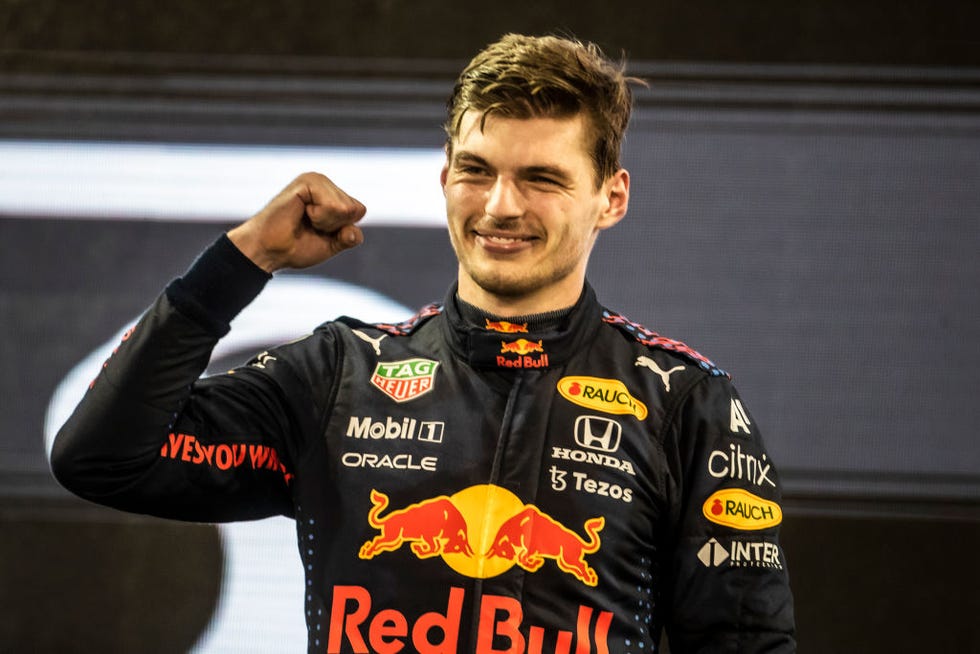
With its extremely fast speeds and very real element of danger, it’s no wonder why Formula 1 has to be strict with the rules. From getting an F1 Super Licence to wearing fireproof gear any time you’re in a race car, there are a lot of things drivers have to do before starting their engines. If you’ve seen the hit Netflix show about the sport, Formula 1: Drive to Survive, that’s only the beginning. For the full scoop on all the rules these athletes have to follow, keep reading.
F1 drivers have to have a Super Licence.
A regular driver’s license isn’t enough—F1 drivers must obtain what’s called an F1 Super Licence. Nope, that’s not spelled wrong. It has the European spelling, as it’s issued by the Fédération Internationale de l’Automobile (FIA). The licence involves an intense written test and prior racing experience. Some drivers with dual citizenship race under a different nationality, like Alex Albon, who has a Thai license.
They must be 18 years old to compete.
This rule is relatively new, first being implemented after Max Verstappen made his Formula 1 debut at just 17 in 2015. The age limit helps maintain the sport’s “elitist nature.”
Cars and drivers must meet a weight minimum.
See that right there? That vehicle is in the midst of a weigh-in. For the 2022 season, the driver and car must weigh a combined minimum of 798 kg (1,759 lbs) for safety and speed reasons. Weights are added to cars where the driver is too light to help level the playing field.
Drivers have to weigh themselves after each race.
This helps officials make sure the car and driver meet their minimum weight. Another reason? Drivers could drop anywhere from 4 to 8 lbs during a race due to sweating in the high temperatures in the car (it can reach up to 122 degrees Fahrenheit!). The weigh-in informs medical staff how much weight a driver lost. If it’s more than usual, they can act accordingly.
Don’t worry: Drivers can hydrate while racing.
Some drivers have a special hydration system built into their cars. A button on the steering wheel will shoot an isotonic sports drink designed to keep them super hydrated into their mouths.
They have to agree to grueling travel schedules.
F1 drivers should expect to be away from their families for extended periods of time during the season—back-to-back races mean being away from home for two weeks at a time. But mechanics, engineers, and other crew members have it even harder, with sometimes over two months of continuous travel.
Flying with the team isn’t required.
Some drivers travel with their team on commercial flights (in business or first class, of course), while others charter their own private jets. Or, if the race happens to be in a driver’s home country, they’ll often stay at home and take their own cars to the track.
Hotel stays are covered by the team.
Whether drivers end up in a 5-star hotel or a short-term rental apartment, the team typically covers all expenses.
There’s only one way to change their number.
At the very beginning of their F1 career, drivers must choose a permanent racing number. There are often personal meanings behind their choice. Want to change it? Only the reigning world champion can swap to #1 following their winning season.
Winners don’t always get to keep their trophies.
Most only get a replica of their trophy, because drivers usually sign a contract with a clause that says their team gets to keep the real one. Many teams put them on display in their headquarters.
There are no bathroom breaks during races.
Since pit stops take mere seconds, trainers time meals and liquid intake to help ensure drivers don’t need a bathroom break mid-race. In the case of emergencies, drivers are instructed to pee inside their suits, but this isn’t very common.
They can’t be late to mealtimes.
Teams often have a culinary staff that feeds the drivers, as well as the crew and guests. “The only important thing for the drivers’ food is that it is on time,” Red Bull’s executive chef, Sandro Gamsjager, told CNN in 2014. “Normally they eat one and a half hours before they get in the car.”
Full gear must be worn when driving.
Yes, even during practice. That includes a fireproof suit, helmet, neck protection, racing boots, and balaclava. Oh, and gloves with a biometric sensor on the fingertip, so the team can track drivers’ vitals in real time, like their heart rate and oxygen levels.
Drivers have to talk to the press.
When you see a driver immediately go from the track to interviews, it’s not necessarily because they want to. Making oneself available to the media is required, and is a part of the formal rule book.
A team member records all interviews.
This is so no driver can be misquoted. These “minders,” as they’re called, often serve as personal assistants, helping to schedule busy days for the drivers.
Drivers used to not be able to engage with fans on social media.
In 2017, Formula 1’s ownership changed hands, and teams and drivers have been posting away ever since. They often
